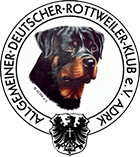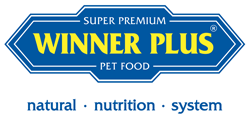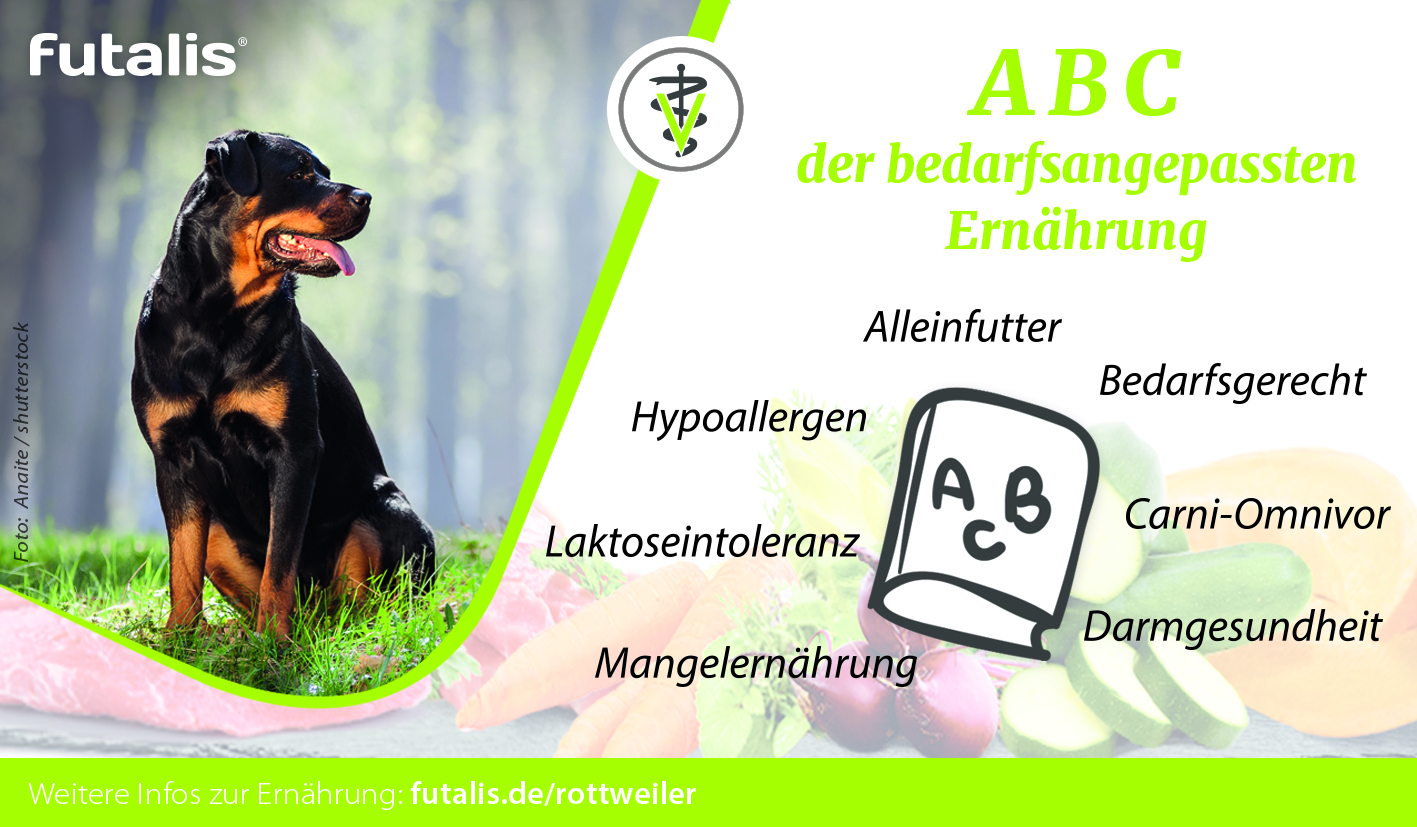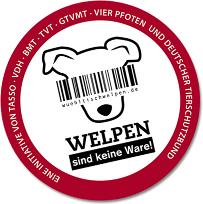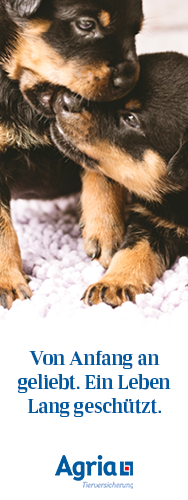| ADRK |
| Allgemeiner Deutscher Rottweiler-Klub e.V. |
Needs-based nutrition from A to Z
In the past issues you have already learned a lot about the nutrition of dogs. Here you can find an overview of what the most important terms of nutrition mean.
Complete food
According to the feed law, a complete feed is called a complete feed for dogs if it contains a minimum content of all necessary nutrients for all dogs and therefore does not fall below their daily nutrient requirement. However, maximum levels are not set for most of the nutrients it contains.
Needs-based
However, the needs-based feeding goes one step further. It also ensures that over-supplies are avoided, which are unavoidable with complete feeds when different minimum requirement values have to be covered with one feed. In the case of nutrition tailored to requirements, a professional ration calculation is used to determine an exactly suitable feed composition for the individual dog. This is only possible with a self-prepared fresh ration or an individually produced finished feed.
Carni-Omnivor
Dogs are Carni-Omnivore by nature, meat and plant eaters with a preference for meat. Their need for amino acids is already covered by relatively small amounts of high-quality protein sources (e.g. muscle meat or eggs). Healthy dogs are often given more meat in order to ensure energy supply and a pleasant taste. In dogs with kidney or liver disease, on the other hand, it is better to avoid a higher meat intake and to cover the energy requirement mainly with fats and carbohydrates.
Intestinal health
A healthy intestine needs a feed made of compatible raw materials with an optimal ratio between proteins, fats, carbohydrates and fibres. However, there is no optimally compatible food for all dogs, because the demands of the different dogs are very individual. Some dogs tolerate a wide range of ingredients, other dogs have allergies and can only consume certain ingredients. Also proteins and fats must be adjusted on the one hand after the individual nutrient need, in addition, after the personal compatibility. Depending on this, the optimal content of carbohydrates is also determined, supplemented by fibres that support the intestinal movements and the intestinal flora.
Elimination diet
The elimination diet or exclusion diet is the method of choice for detecting feed allergy. A feed ration consisting exclusively of safely tolerated ingredients is fed for about 12 weeks and is intended to lead to a reduction in symptoms. The ingredients of the elimination diet are exclusively a protein source and a carbohydrate source, which the dog has never received in his life and which can therefore not have triggered any allergy. The ingredients are selected according to the individual feeding history. To be on the safe side, no further additives should be added during this limited period to cover the entire nutrient requirement. If the symptoms subside in the course of the elimination diet, the suspicion of a feed allergy can be expressed. Only the subsequent provocation diet, in which suspicious feeds are individually added again, is ultimately conclusive if the symptoms occur again. Blood tests, on the other hand, are not proof of a feed allergy.
Moisture content
The moisture content in the feed is the proportion of water it contains. It is largely responsible for the consistency of a feed. Dry feed contains only about 10 % water, while wet feed contains about 70 to over 80 % water. According to the law, the moisture content must be indicated on every feed if it exceeds a value of 14%. This is the only way to ensure that the content of other nutrients (e.g. protein or fat) can be correctly assessed. In the case of dried fodder, it is not mandatory to indicate the low moisture content. In some cases, however, the dry matter (anhydrous fraction) obtained by subtracting the water content from the total feed is given instead.
Geriatric nutrition
Geriatrics describes the special requirements of dog seniors. Older dogs often have a reduced energy demand, on the one hand by a reduced activity, on the other hand by a slowing down of the metabolic processes. A slightly increased fibre content in the feed can have a positive effect on digestion. It is also advisable to reduce protein intake in older dogs in order to relieve the liver and kidneys, which have often become more susceptible in old age.
Hypoallergen
A hypoallergenic food contains as few potential allergens as possible. It depends less on the type of ingredients, but more on the number. A hypoallergenic food should have as short a list of ingredients as possible and contain only one type of meat (protein source) and carbohydrate source. Few ingredients reduce the risk of developing an allergy to the food or to one of the ingredients.
Ideal weight
The ideal weight is the nutritional condition of a dog, in which neither excess fat pads nor clearly protruding bones are present. The feeding and keeping of a dog should always be aimed at maintaining or regaining the ideal weight. Underweight with protruding bone points, on the other hand, is a sign of malnutrition or disease in the dog. Overweight with palpable and visible fat pads indicates overfeeding combined with inappropriate exercise. Overweight is not a purely cosmetic problem, but represents a great strain on the cardiovascular system and the joints. The ideal weight can and should normally be restored by correcting the feed quantity and selecting a suitable feed composition.
Young dog nutrition
Young dogs make very special demands on the nutrition. Due to their growth, they have a higher energy and nutrient requirement than adult dogs and need not only more food, but also a special food composition. The composition of the food should be adapted to the breed, the age and the current weight of the puppy and adapted to the changing needs as the puppy grows. If this is guaranteed, the growth can be tracked using breed-specific growth curves that are based on the expected final weight of the young dog. In the case of a deviating course, the feeding should be adjusted accordingly until the growth corresponds approximately to the curve again.
Calcium - phosphorus ratio
The demand for calcium and phosphorus is in a certain ratio to each other. If the exact individual nutrient requirement for the individual dog has not been determined, the calcium-phosphorus ratio is at least a good guideline to assess the suitability of a complete diet. In contrast, when feeding as needed, the individual requirement values of a dog are precisely adjusted and the absolute quantities assessed, so that the ratio of nutrients to each other is less relevant there. In addition to calcium and phosphorus, the other quantitative elements (such as sodium, potassium, magnesium or chloride) are also added in quantities that meet the dog's needs.
Lactose intolerance
Dogs also often have to struggle with lactose intolerance. An intolerance to dairy products occurs particularly in adult dogs, as the activity of the enzyme lactase, which is responsible for the cleavage of the milk sugar (lactose) contained in dairy products, decreases with age. The absorbed lactose is therefore not digested and reaches the large intestine, resulting in faulty fermentation and digestive problems. Other dairy products such as yoghurt or quark, on the other hand, are also used to treat stomach problems, as they have a beneficial effect on health, at least in limited quantities.
Malnutrition
Malnutrition occurs when there is an undersupply of certain nutrients. The result can be underweight or a shaggy coat. However, overuse is also relevant: In the case of an oversupply of energy, there is a risk of overweight, while other nutrients can cause urinary stones or digestive problems, for example.
The needs-adjusted feeding avoids both under- and oversupply.
In the next issue you will find out more about nutrition tailored to your needs from N to Z!
